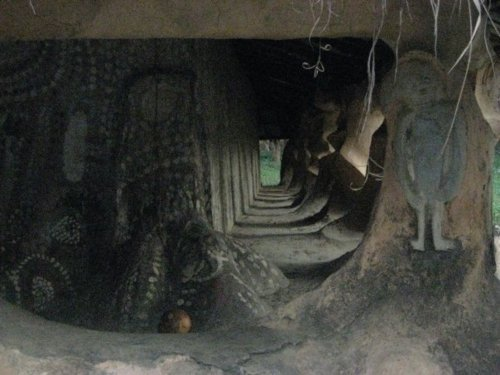Economic and Social factors affecting Yoruba Architecture and Burial Rituals
Yoruba architectural structures distinctly reflect the social differences within the society. This is seen in the way the Yoruba palaces are the center of the city, with everything and everyone else revolving around the "oba" or the "Alaafin" of the kingdom. Yoruba architectures are very reflexive of the social, economic, and political climate of the culture and provide a crucial understanding of the Yoruba people's norms and way of living. Yoruba royal palaces usually consist of rectangular buildings adorned with lavish gardens to represent their wealth and their social status in society. The more lavish the palace and the architecture, (building structures and non-building structures), the wealthier the "oba" or the "Alaafin" is.
This is an image of a traditional Yoruba architectural building. This building has a large open courtyard that can be used for cooking, social gathering, or as a garden plot.
This same socio-economic standard is reflected in Yoruba burial rituals and the architecture surrounding the burial customs. Like many other aspects of Yoruba architecture, it consists of traditional building structures, and the incorporation of non-traditional building materials like the use of gardens, stones, and other natural materials. The lavishness of the burial ground and the adornments of the burial ground reflects the social class of the person being buried.
This image shows the use of lavish stone carvings in Architecture.
The Yoruba culture also integrates the use of their "orishas" into their architecture and burial customs. Because the royal rulers of the Yoruba people are associated with divination, their burial practices are specially adorned with a multitude of Orisha structures built to embellish the dead. The preciseness in the symmetry within Yoruba architecture is also a key factor in the burial custom.
This is an image depicting some of the Yoruba Orishas





Comments
Post a Comment